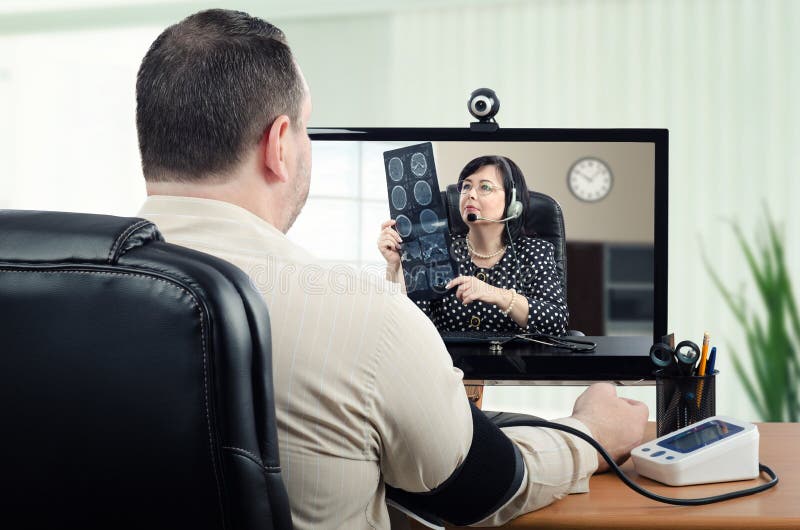Teledoctors: Reinventing Access to Medical Care Services
Teledoctors: Reinventing Access to Medical Care Services
Blog Article
Checking Out the Conveniences and Difficulties of Teledoctors in Modern Healthcare
As the healthcare landscape advances, teledoctors have arised as a critical component in bridging spaces in clinical accessibility and efficiency. Just how can the health care market balance these benefits with the integral obstacles?
Expanding Accessibility to Treatment
Telemedicine has emerged as a critical innovation in modern healthcare, substantially expanding access to look after diverse populaces. By leveraging digital modern technology, teledoctors have changed the typical healthcare shipment design, making it possible for individuals in remote or underserved locations to obtain prompt clinical examination. This advancement is particularly advantageous for individuals residing in rural neighborhoods, where the deficiency of medical care facilities and specialists commonly leads to postponed or insufficient therapy.
Teledoctors contribute in bridging the space produced by geographical obstacles. Through digital assessments, patients can access a wide variety of healthcare services without the need for comprehensive traveling. This is particularly useful for those with movement concerns or persistent conditions calling for frequent medical focus. Moreover, telemedicine improves connection of care by making it possible for regular follow-ups and monitoring, consequently boosting individual results.
The combination of teledoctors right into health care systems also sustains the monitoring of public health and wellness dilemmas by promoting fast feedback and triage. During pandemics, for example, online assessments decrease the problem on physical medical care facilities, lessening exposure risks for both individuals and health care suppliers. As telemedicine remains to develop, it assures to improve the landscape of health care availability, making it much more efficient and comprehensive.
Cost-Effectiveness of Teledoctors
The cost-effectiveness of teledoctors is a considerable variable driving their prevalent fostering in medical care systems. By decreasing the requirement for physical framework and in-person sees, teledoctors use an even more affordable choice to traditional medical care distribution.
Moreover, teledoctors assist in an extra efficient use health care sources by lessening unnecessary emergency area check outs and health center admissions. Individuals can access prompt consultations for minor conditions or follow-up treatment, which aids to reduce the burden on overstretched medical care facilities. This efficiency not just causes cost savings for doctor but also minimizes the economic pressure on individuals who could otherwise encounter expensive medical facility bills.
Furthermore, teledoctors can assist in handling persistent diseases better by providing regular tracking and timely treatments. This positive method can protect against issues, thereby decreasing long-term therapy costs. In general, teledoctors offer a practical service to the intensifying prices of health care, while preserving high quality treatment distribution.
Enhancing Client Convenience
While cost-effectiveness plays a pivotal duty in the rise of teledoctors, improving client ease stands as an additional compelling benefit of this medical care version. With the integration of teledoctors, clients can bypass the generally time-consuming process of organizing and going to in-person visits. This design eliminates the demand for travel, reducing time spent in transit and waiting areas, thereby using substantial time financial savings for patients. Especially for those with flexibility issues or staying in remote areas, teledoctors give an important link to treatment that could otherwise be hard to reach.
Moreover, teledoctors provide flexible organizing, enabling patients to organize appointments at times that best match their individual and professional dedications. This flexibility is indispensable for individuals balancing demanding job schedules or family obligations, making certain that healthcare can be integrated seamlessly right into their lives. Furthermore, the capability to accessibility physician from the comfort of one's home can lead to increased person involvement and adherence to therapy strategies, as the obstacles to seeking treatment are reduced.
The convenience offered by teledoctors not only improves the client experience yet also internet contributes to a more reliable and responsive medical care distribution system, inevitably sustaining better health outcomes.
Dealing With Privacy Issues
In the middle of the expanding fostering of teledoctors, personal privacy problems become a considerable consideration. As health care significantly counts on digital systems, guaranteeing the confidentiality of client details ends up being paramount. The digitization of medical documents and the usage of telecommunication innovations necessitate durable safety and security actions to shield sensitive information from unapproved accessibility and violations.
Medical care service providers should follow stringent regulations, such as the Medical Insurance Portability and Accountability Act (HIPAA) in the USA, which establishes nationwide standards for protecting clinical details. Conformity with such policies is critical in keeping client trust fund and ensuring their data is taken care of sensibly. Encryption of information, safe communication networks, and normal audits are some of the measures that can be implemented to improve information protection.
Despite these steps, difficulties linger. Cybersecurity hazards are progressing, and healthcare organizations have to remain cautious to brand-new susceptabilities. Furthermore, informing both patients and doctor concerning best practices in information personal privacy is necessary. This consists of understanding the restrictions of digital communication and the value of protected login credentials. teledoctors.
As teledoctors end up being more indispensable to healthcare shipment, attending to personal privacy issues is important to make sure both the efficacy and dependability of these services.

Browsing the Digital Divide
Linking hop over to these guys the digital divide is a crucial obstacle in the prevalent fostering of teledoctors. The advantages of teledoctors-- such as raised ease of access and convenience-- stay inaccessible for several people who could most benefit from them.
Additionally, efforts to subsidize innovation for low-income houses can play a critical duty in making sure fair access. Healthcare suppliers and community organizations ought to team up to offer digital literacy programs, encouraging people to navigate telehealth platforms confidently.

Final Thought
The integration of teledoctors right into modern-day medical care offers considerable advantages, including raised access to care, cost-effectiveness, and boosted person benefit. However, difficulties such as personal privacy issues, the electronic divide, and cybersecurity risks have to be addressed to optimize these advantages. By applying durable data defense measures, boosting electronic literacy, and guaranteeing protected technical infrastructure, the capacity of teledoctors can be fully recognized, advertising equitable medical care delivery and changing the healthcare experience for all people.

Report this page